Canada and USA
The Old Master: Analyzing The Subtle Sophistication Of Joe Gans
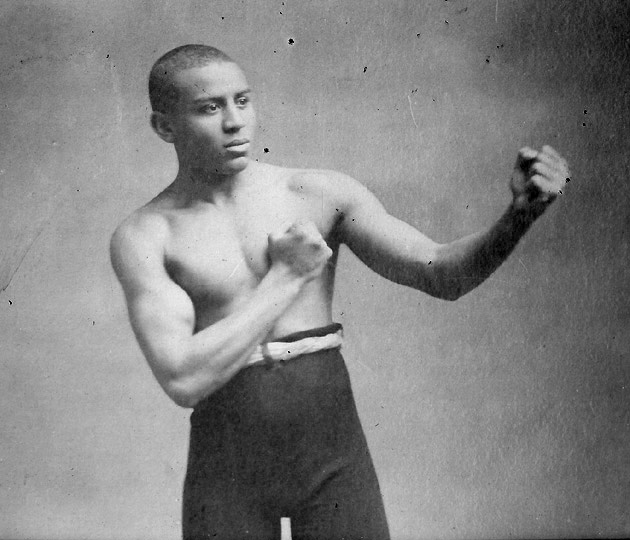
Old Master – Just as it behooves politicians to go back and revisit the actions of marvels like Abraham Lincoln, fighters of today would be well served to study the old masters like “The Old Master,” Joe Gans. Some of his tricks of the trade could be made use of in the rings of today.
Known as the first black American prizefighter to ever capture a world championship, Joe Gans would soon become better known for his exquisite boxing skill. A pioneer in the art of scientific boxing -hitting without being hit in return- Gans could make an opponent fall just short with a subtle turn of the head, before countering with ultra-precision. While facing formidable opposition like Sam Langford, Battling Nelson, Jack Blackburn, Young Griffo, Dave Holly, “Barbados” Joe Walcott, Frank Erne and Terry McGovern, Gans became distinguished for his ability to determine his opponent’s strengths and weaknesses, and then play out the fight to his own strengths and his opponent’s weaknesses. Gans was the ultimate student of the game. Borrowing from the likes of James J. Corbett and Bob Fitzsimmons, Gans would absorb what was useful and integrate his findings into his own style. He even devised some new techniques and strategies of his own. Gans may or may not have invented the jab, but the way Gans used it, employing it both as a defensive weapon to intercept the attack of his opponents and as an offensive weapon to create openings and set up his right hand and his uppercut –another punch Gans has been credited with inventing–was considered revolutionary at the time.
A thinking fighter if ever there was one, Gans, alongside the likes of Bob Fitzsimmons, Benny Leonard and Archie Moore, is one of the smartest fighters to have ever lived. One example of his vast ring IQ came in 1902, during the rematch with Frank Erne. Having previously lost to Erne, Gans trained for the rematch with the intention of implementing something he had noted in their first fight –just as Erne would initiate his left, he would check his opponent’s reaction. If his opponent brought their rear hand down to parry the left jab, he’d turn it over into a left hook. On the other hand, if the opponent would cover the right side of their head in anticipation of a left hook, he’d shoot a jab straight up the middle. Fueled with this knowledge, Gans waited for Erne to telegraph his left hand. Instead of trying to block the attack, Gans came inside it with a right hand and ended matters with a little over one minute remaining in the very first round.
Although there isn’t a great deal of film available on him, the footage we do have of Gans is extensive enough to a garner a real appreciation of the man’s craft and acumen. Here, using the Joe Gans-Kid Herman fight from 1907, I’d like to highlight some of the time tested techniques that Gans used. Although the footage is lacking in quality and is a little grainy at times, I consider it a real treasure chest of technical gems!
Here’s a little reminder before viewing.
While watching the fight, it’s important to realize that boxing has changed an awful lot between then and now. For instance, fights went on a lot longer and the gloves were a lot smaller. As a result, different circumstances called for different styles and strategies and there was more emphasis placed on in-fighting which included extensive holding and wrestling for position. Also, because those gloves were a lot smaller, it was far more difficult for a fighter to simply apply the ear muffs and shell up when defending. Far more thought had to be placed on hand evasions such as glove blocking, hence, boxing had a different look and feel to it back then.
The Fight
{youtube}ML5WLvrc0P8{/youtube}
As the footage starts at the beginning of the round two, notice the stance and posture of Joe Gans. Although many have claimed that the famous Jack Blackburn/Joe Louis’ stance was based around Gans’, there are some notable differences which I’ve highlighted below.

Here, Louis’ weight is slightly over on his front leg. With his body turned to the side, his knees are bent and his head is slightly off center and tilted to his right. Louis’ lead hand is carried quite low, but his rear hand is a little higher and in a position to parry. Overall, Louis’ stance was really more of a crouch. This stance allowed Joe to shuffle forward behind his jab where he could catch his opponent’s jab and counter.

By contrast, Gans’ (on the right) more upright stance was more like that of Jack Johnson or Benny Leonard. This was the more traditional on-guard stance that was also used in fencing. Instead of the weight being over on the front leg, the weight is over on the back leg (notice there’s almost a direct line between Gans’ back leg and head). This was more of an elusive stance which gave a fighter (a) a lot more freedom to move around the ring with (especially when evading quickly in a straight line) while still allowing them to maintain excellent balance, and (b) a greater distance between an opponent’s lead hand and their head. Gans’ hands seem to be carried a little low, but remember, fights could surpass forty rounds or more back in those days. Keeping the hands held high for such a prolonged period of time would have been very tiresome. It was all about preserving energy back then -another reason you rarely saw fighters wasting energy by throwing combinations during this period.
Let’s get back to the fight…
Within the opening moments, Gans ties Herman up. Immediately afterwards, we see an example of Gans’ elusiveness. At around 0:40 mark, we see Gans foil two attempted lefts by Herman. On both occasions, Gans diffuses the blows by moving away on his back foot while placing his left glove just below Herman’s left shoulder, killing the blow before it picks up a head of steam. At the 0:43 mark, we see Gans’ mastery in full flow. First, Gans throws a non-committal jab to set up a short right hand. Within as instant, Gans pulls back and moves off at an angle, where he catches Herman as he’s turning with a right uppercut and left hand. Throughout the whole sequence, Gans’ footwork is brilliant –always positioning himself in a way so that his centerline is away from Herman’s but Herman’s is still within punching range. This is a prime example of how to take an angle on an opponent.
For the next few moments, we begin to see a pattern emerge. Gans is on his back foot looking to counter, while Herman is coming forward looking to land his left hook. At 1:45, we see more of Gans’ defensive genius. As Herman is pressing the attack, Gans feints with a right uppercut, before landing a jab and rolling under Herman’s left hook. More genius soon follows. After taking up the center of the ring, Gans takes a small step backwards to draw Herman in. As Herman comes forward, Gans feints a jab and connects with a jolting right uppercut.

Here, Gans feints a jab. As Herman reacts, Gans throws a non-committal jab (feint) followed with a right uppercut as Herman is stepping inside. This is brilliant strategy –shoulder feint, non-committal jab (to open Herman up) then a rear uppercut.
Gans was masterful in tying up his opponent. If you look at the 2:07 mark, you’ll see Gans block yet another attempted left by Herman before tying him up on the inside. Rather than describe every single clinch that takes place in the fight (as I said earlier, clinching occurred more often than not during this time and it happens a lot in this fight) I’ll just go over what can be considered a common occurrence during most of the clinches that take place. Notice the following;
- Gans nearly always secures bicep control over Herman. By clamping down on Herman’s biceps with open gloves, Gans is able to manipulate and maneuver Herman around while also preventing him from throwing anything noteworthy on the inside. Jack Johnson was another great exponent of this technique and not too long ago, Floyd Mayweather had great success over Miguel Cotto on the inside using bicep control also.
- Whenever Gans secures over-hooks, notice that Gans’ head is nearly always placed on Herman’s shoulders. It’s impossible for him to be hit with anything while his head is in this position.
- On the over-under tie up, Gans nearly always has his free hand clamped down on Herman’s left arm. Again, Gans must have been very conscious of Herman’s left hand threat.
It’s clear that Gans was just as skilled on boxing on the inside as he was boxing at range. Gans wasn’t the biggest lightweight you’ll ever see, but the way he positioned himself in close, using smart clinching tactics as well as leverage to unbalance, allowed him to control Herman in most of the clinches.
Moving on to the 2:33 mark, we see Gans back on the offensive, while also showing superior defense. With both men posturing from the outside, Gans steps in and lands a right uppercut. As Herman recovers, he leads with a left/right which Gans evades by rolling with each blow before forcing another clinch, where he lands a flush right hand immediately after breaking away.

Here, Gans lands a right uppercut. As Herman regroups, he comes in with a left/right. Notice in the 5th photo how Gans’ left hand is traveling across his body to meet Herman’s left arm. As the hook arrives, Gans meets it with the inside of his left glove, almost forming a vice between the inside of his left glove and right shoulder. From here, Gans intercepts the right, placing his left glove near Herman’s right shoulder, and rolls with the punch.
At 3:12, Gans’ superb counter-punching skills are on display (it won’t be the last time we see them). Again, Herman leads with a left hook followed by a right cross. Gans anticipates both the left and right, rolling with each before countering with a straight right hand to the body.

Here, Gans blocks a wide left hook using his right forearm. As Herman comes back with a right hook, Gans picks that shot of using his left forearm. Gans punctuated the sequence with a straight right hand to the body underneath Herman’s left elbow. Notice the whole time Gans is blocking that he’s rolling with the blows. If one of Herman’s shots managed to sneak past Gans’ forearms, the fact that Gans is rolling and turning with the punches by moving his head, would likely result in the shots missing the mark anyway.
As both fighters come out for the beginning of the third round, the pattern is still very much the same. Gans continues to probe and assess, while Herman continues to load up with lefts and rights. At around the 4:19 mark, as Gans begins to apply a little more in the way of pressure, Herman attempts to land a wide left hook to the body, where Gans executes a perfectly timed elbow spike.

As Herman comes inside with a wide left hook aimed towards Gans’ midsection, Gans intercepts, coming down on top of the blow with the point of his right elbow. Notice as Gans’ blocks the left, he throws a simultaneous jab. This attack is known as a stop-hit. This is the act of blocking an attack with an attack. It’s a technique that is rarely used anymore.
At 4:45, we see an example of Gans’ brilliant foot speed and reactionary skills. As Herman leads with a wide right cross, Gans takes two (yes, there’s two, he just moves so quick you don’t see them) steps back. Notice as Gans is stepping back, how his feet never cross one another. Also, Gans’ back foot moves away first, followed by his front foot. This gives good balance and it is how all fighters should move around the ring –the foot nearest the direction you’re moving in should always move first.
As Gans begins walking Herman down, we see him perform yet another stop-hit at the 5:29 mark.

As Herman steps in to throw what looks like a left jab, Gans intercepts the blow with a perfectly timed stop-hit. As Herman steps in, Gans plants his left hand on top of Herman’s left shoulder, thus diffusing the blow before it picks up a head of steam. Also notice Gans’ right glove during this sequence. Should Herman’s jab get beyond Gans’ extended left, Gans’ right glove would likely block the shot anyway.
At 5:40, we see Gans inching forward. As he shortens up the distance, notice the subtle feints he’s throwing. Because he’s reacting to the feints by backing up and flinching, Herman decides to come forward and ends up walking onto a Gans uppercut. These subtle feints, that had Herman overreacting every time he threw one, were easily Gans’ most effective weapons during the fight. Moving on, after flooring Herman with a right hand (although it didn’t seem to be counted) Gans continued to apply pressure. After evading a left and a right using stellar footwork, at around 6:30, we see Gans execute yet another beautifully timed stop-hit.

As Herman throws a left hook, Gans blunts the blow, trapping it between his extended left arm (pushed in towards Herman’s left armpit) and open right glove (placed on the back of Herman’s left shoulder).
Moving on to the eighth and final round, at 6:53 Gans is in full pursuit of his man. Closing the distance behind stop-hit after stop-hit, Herman is forced onto his back foot and is struggling to get off. By now, Gans has him timed to the point where he knows when every single one of Herman’s attacks is coming. Even though Gans is now walking his man down, notice that he’s not doing it behind relentless pressure, or by throwing ridiculous amounts of punches. Instead, Gans is intelligently cutting the ring off using small shuffling steps, along with throwing subtle feints and well-timed stop-hits. Imagine what Herman must have be thinking? Here he is being systematically broken down and Gans isn’t really throwing anything. It’s severe mental pressure that Gans has put Herman under here. As Gans continues to maneuver Herman around the ring using stop-hits, the action falls just out of range of the camera. Although it’s difficult to see, at 7:52 Herman throws a right cross which Gans evades by rolling with the blow. After evading the cross, Gans waits for a moment, feints and then throws a right uppercut before moving off to a different angle.

Here, Gans feints before throwing a right uppercut. After landing, Gans adjusts his feet and moves to the side of Herman. Again, Gans shows his understanding of working angles by moving his centerline away from Herman.
Soon after, we see Gans at his most aggressive. As Herman is still in the corner, Gans goes to work. After rolling with a left hook and a right cross, Gans clamps down on the back of Herman’s neck and lands a right uppercut, before turning his man behind a short right hook. As Herman begins to back-pedal away, Gans cuts the ring off, blocking Herman’s exit and forces him towards the far corner of the ring. As Herman moves toward the ropes, Gans follows and knocks him out with a counter right hand.
It’s important to notice during this final sequence how patient Gans was. As Herman’s back almost touched the ropes, notice how Gans shortened up his steps as he was advancing, giving Herman a false sense of distance. Gans was fully aware that Herman was likely to come back with something the moment his back touched the ropes. Also, notice how Gans’ left hand was extremely low, probably lower that it had been at any point during the fight. This is what is called an attack by drawing –offering up a target so that as your opponent attacks your perceived vulnerable spot, they themselves leave an opening for a counter of your own. In this case, Gans gave Herman the impression that his left side was vulnerable. By taking the bait, Herman over committed with his right cross. Knowing what was likely to present itself, Gans rolled with the punch and countered in a flash with a beautifully timed right hand.

As Gans approaches with his left arm low, Herman attempts to take advantage with a wide right cross. Just as the blow is about to reach half way, Gans intercepts, slowing it down by jamming his left hand into Herman’s right shoulder, before rolling with the punch and coming back with a short right hand. Take a look at Herman’s positioning in photo 3. This was no accident. The knockout is one of the finest examples of counter-punching you’re ever likely to see inside a boxing ring.
I’m pretty certain that some of these old fighters from yesteryear aren’t for everyone. Whether that’s because of the way they fought back then, or because of the quality of the actual footage, it doesn’t really matter.
What matters for me though, when watching the subtle skills of Joe Gans in the Kid Herman fight, is realizing that in terms of the way he could set a man up -feinting him out of position or by offering up targets to draw him in and counter- Gans was clearly light years ahead of his time.
Joe Gans is by far and away one of the most intelligent, cerebral fighters that I’ve ever seen on film. This footage is more than 100 years old. Yet what he did here seems innovative even today.
Old Master
-

 Book Review4 weeks ago
Book Review4 weeks agoMark Kriegel’s New Book About Mike Tyson is a Must-Read
-
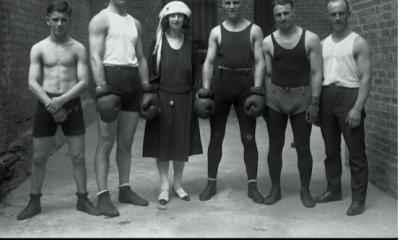
 Featured Articles3 weeks ago
Featured Articles3 weeks agoThe Hauser Report: Debunking Two Myths and Other Notes
-
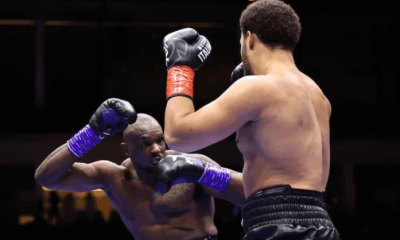
 Featured Articles3 weeks ago
Featured Articles3 weeks agoMoses Itauma Continues his Rapid Rise; Steamrolls Dillian Whyte in Riyadh
-
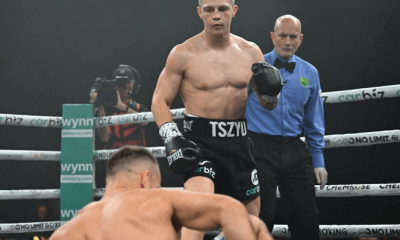
 Featured Articles3 weeks ago
Featured Articles3 weeks agoNikita Tszyu and Australia’s Short-Lived Boxing Renaissance
-
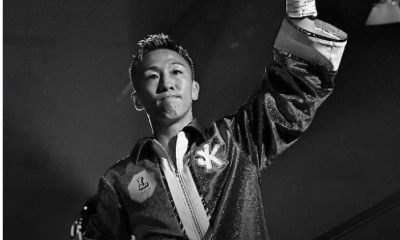
 Featured Articles4 weeks ago
Featured Articles4 weeks agoKotari and Urakawa – Two Fatalities on the Same Card in Japan: Boxing’s Darkest Day
-
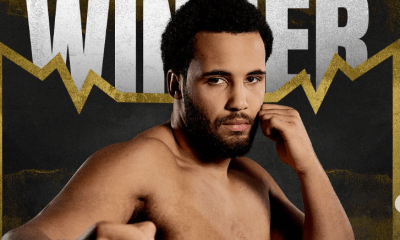
 Featured Articles3 weeks ago
Featured Articles3 weeks agoIs Moses Itauma the Next Mike Tyson?
-
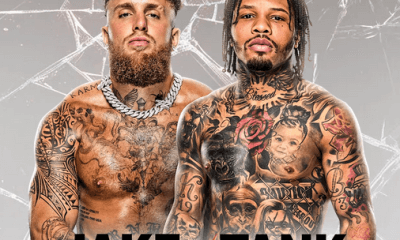
 Featured Articles2 weeks ago
Featured Articles2 weeks agoBoxing Odds and Ends: Paul vs ‘Tank,’ Big Trouble for Marselles Brown and More
-

 Featured Articles3 weeks ago
Featured Articles3 weeks agoAvila Perspective, Chap. 340: MVP in Orlando This Weekend














